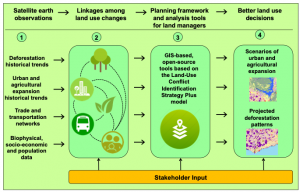Click each project title to expand the project details.
ELEMENTS: CYBERINFRASTRUCTURE SERVICE FOR IOT-BASED CONSTRUCTION RESEARCH AND APPLICATIONS
Nelms Institute Contact: Aaron CostinThis project develops a robust cyberinfrastructure (CI) system and service for construction research and applications to address the current challenges faced in the construction industry. The outcomes and services that this project aims to provide are 1) a distributed SDN-managed and AI-assisted IoT based system that can be adapted and extended based on needs of the research and application; 2) identification of the data and data security requirements needed to address the challenges in the construction industry and potential technologies that can provide those data; 3) evaluation of reliable realtime multi-sensor fusion techniques for ruggedness, usability, and limitations of IoT-based components deployed in the dynamic construction environments; 4) robust prototype system for real-time safety monitoring based on the IoT system framework; and 5) recommendations of potential configurations of the system with the appropriate technology and sensors to meet the needs of the application. The system is named IoT-ACRES, short for IoT-Applied Construction Research and Education Services.

LINKING DEFORESTATION, URBANIZATION, AND AGRICULTURAL EXPANSION FOR LAND USE DECISIONS IN GHANA
Nelms Institute Contact: Aditya SinghAssists local and regional land management agencies in Ghana resolve land management conflicts by using remote sensing products integrated into a geographical information systems-based land use planning management information system.

DARLING – DRONE-BASED ADMINISTRATION OF REMOTELY LOCATED INSTRUMENTS AND GEARS
Nelms Institute Contact: Swarup BhuniaThis work is about a framework for assisting remote devices using an Unmanned Aerial Vehicle (UAV). The DARLING architecture has three hardware components: the UAV, a base station which is responsible for housing the UAV, and remote devices which the UAV services. We describe all the parts needed for the base station and the UAVs in order to carry out a smooth, remote maintenance procedure. Whenever it is unsafe for the UAV to land near the remote device, we propose the use of a Detachable Charging Unit (DCU) which has a platform that carries a battery pack and connects to the remote device for charging while the UAV services another device. In this invention, we outline three types of maintenance based on schedule or unexpected issues discovered by AI models in both the base station and the UAVs. Most maintenance are what we call regular maintenance, where standard servicing procedures occur, such as charging and data transfer. DARLING can also anticipate future issues on the base station based on the collected diagnostic information from the remote device via the UAV through predictive maintenance. If the UAV predicts or discovers an issue on the device before performing maintenance, it can perform targeted maintenance on this device. We consider two distinct use cases—a) an IoT device that is in a remote location and b) an IoT device that is in an inconvenient location—and demonstrate the role of DARLING in these scenarios.